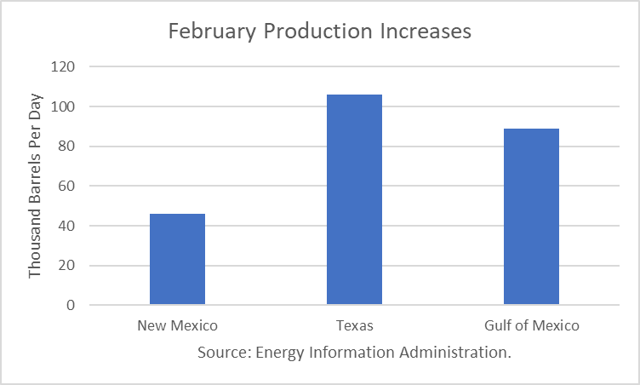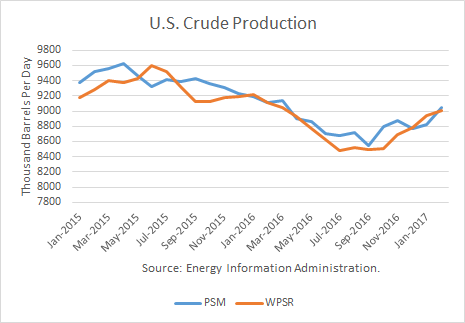
Analysis prepared on March 19, 2018
The relative rate of growth in supply v. demand will ultimately determine stock levels and prices. And the three key predicting agencies, the International Energy Agency (IEA), Energy Information Administration (EIA), and OPEC have different views on what is likely to unfold.
OPEC does not often predict is own production, but in December it forecast it would average 33.2 million barrels per day (mmbd) during 2018. That would far exceed its projected “call on OPEC oil,” which is world demand minus non-OPEC production. For 2018 as a whole, it predicts that figure will be 33.1 mmbd.
That demand for OPEC oil is based on a gain in demand of 1.52 mmbd and a rise in no-OPEC production of 1.15 mmbd. In my view demand is likely to be a bit stronger due to world economic growth. However, the non-OPEC supply number is much too low, given the recent rise in U.S. production of 886,000 b/d from August through November. (December production was down a bit for seasonal reasons.) Furthermore, U.S. production has yet to respond to $60/b. The rise in output last autumn was a response to $50/b.
The EIA has the most aggressive non-OPEC production estimate of a gain of 2.5 mmbd, with 2.0 occurring in the U.S. alone, and the balance in Canada and Brazil. The EIA forecast is based on a gain in crude production of 1.5 mmbd and a rise in other liquids of 500,000 b/d. WTI did not exceed $60 in any month since 2015 until January 2018. And the year-over-year gain in March 2018 is estimated to be 1.29 mmbd. And so the industry’s response to $60/b could very well enable the 1.5 mmbd gain. Continue reading "Updated 2018 Crude Oil Outlook" →



